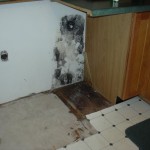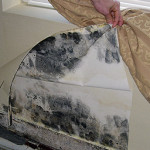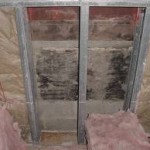
Hidden Mold
The Mold You Cant See
Mold and other bio-contaminants are often hidden behind walls or in attics and basements. In most cases they are non-detectable to the naked eye. You could have a problem in your home or workplace that is causing allergic reactions or illness. We use experience, knowledge and technology to find the problem.
Hidden in Homes
In residential homes condensation on pipes and duct work can cause insulation, sheet rock and studs to become wet or moist. This creates the perfect environment for mold growth. Appliance leaks, bathroom leaks and even excessive moisture or humidity can be the cause. Often this moisture goes undetected and the mold will colonize and spread unseen in the in these hidden areas of the home. Finding the source is key.
Call for a Free Phone Consultation.
888-547-5741
Apartments and Rentals
Unfortunately in rental properties and apartments, mold is very rarely removed or treated correctly. When management is notified of a mold issue, the mold is encapsulated with paint and never actually removed. This is only masking the problem and you are still being exposed to it. Call us to learn how we help renters and tenants.
Is Hidden Mold Making You Sick?
Mold illness can affect different people in different ways. Sometimes people can be affected for long periods of time and realize that something is wrong but they aren’t quite sure what the problem is. Because mold does effect everyone differently, other family members often think these concerns and suspicions are “crazy”, but more often than not the affected individuals suspicions are correct. Questions? Call Us.
Indoor mold has been linked with numerous health issues. Early symptoms of mold exposure can include:
- Nasal and sinus congestion, runny nose.
- Respiratory problems, such as wheezing and difficulty breathing, chest tightness.
- Cough.
- Throat irritation.
- Sneezing / Sneezing fits.
- Headaches
- Tiredness, Fatigue
- Memory Loss
Studies indicate that up to 25% of the population have the genetic capability of experiencing chronic inflammation to mold exposure, but it is unknown how many actually experience such symptoms due to frequent misdiagnosis
When you breathe, the small air sacs or alveoli, that are deep in your lungs inflate and this is the point where airborne contaminants can be absorbed into the blood stream.
Toxic Mold
Some molds also produce mycotoxins that can pose serious health risks to humans and animals. The term “toxic mold” refers to molds that produce mycotoxins, such as Stachybotrys chartarum. Not all molds are toxic.
Call Us To Schedule an Appointment or for a Free Phone Consultation.
888-547-5741
Visit HERE for our latest Discounts and Offers
Copyright © 2024 | MH Corporate basic by MH Themes



